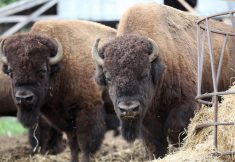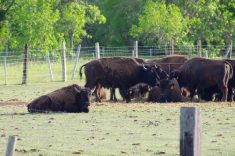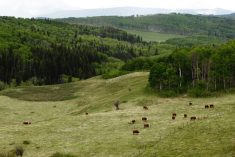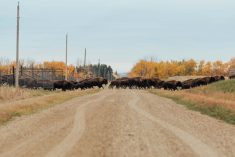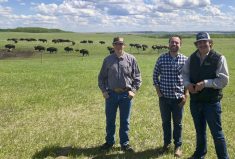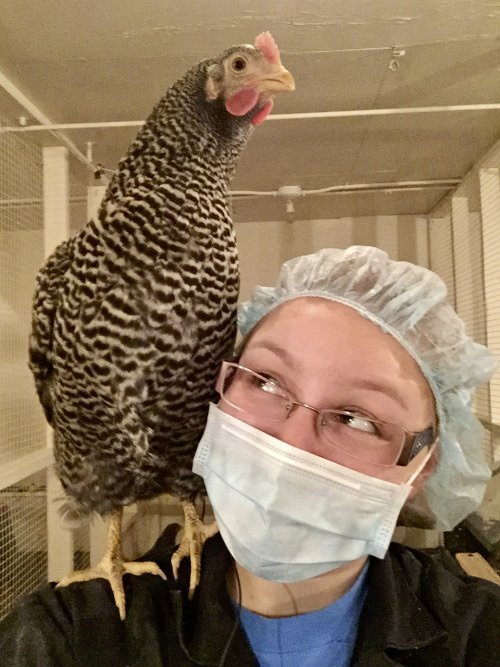Can you tell the difference between a wood bison and a plains bison?
Most people can’t — which is partly why Delta Genomics and a team of collaborators are developing a genomics test that will be able to distinguish the two.

“The biggest difference is that wood bison — their natural habitat is restricted to the northwest corner of North America,” said Michelle Miller, chief executive officer of Delta Genomics. “Plains bison are much more prevalent through the rest of North America.”
Back in the mid-1920s, Parks Canada introduced 6,000 plains bison into Wood Buffalo National Park. The area that became the park had long been home to wood bison, but their numbers had declined substantially. Once the plains bison arrived, they bred with wood bison, and while offspring of the two species tend to be larger than either parent, it’s hard to tell which are wood, which are plains, and which are hybrid.
“It’s especially hard to tell just by looking at them,” said Miller. “So from a conservationist point of view and a production point of view, we want to be able to answer the question, ‘Is that wood or plains?’”
The project, which officially started in January, is a collaborative affair, with contributors from the Canadian Bison Association, University of Alberta, Delta Genomics, and a group at Texas A&M University. Funding has come from both levels of government along with a not-for-profit called Mitacs, which funds research interns and post-doctoral students.
“The first step is to get a lot of genomic information. And we’re doing that through a process called whole genome sequencing,” said Miller.

Genetic material will come from more than two dozen animals, not all of them living. Some samples were collected from bone, teeth, hide, and skull scrapings of exhibits at the Canadian Museum of Nature in Ottawa, while samples of blood and tail switch hair are coming in from northern Alberta and the Northwest Territories.
“We actually got a couple of samples from the Smithsonian as well on some old wood bison and then we got some modern wood bison from Elk Island National Park,” said Miller. “And we’ve also got a number of plains bison from the different lineages that are prevalent in North America.”
It’s hoped that sequencing the bison genetics will allow for the development of what’s called a single nucleotide polymorphism parentage test.
“Right now, parentage for bison is done in a lab in the U.S.,” said Miller. “It’s quite a hassle to send samples across the border, and pay in U.S. dollars. It’s actually quite expensive.
“We’re hoping to develop something simpler and obviously on this side of the border.”

The researchers will also be looking for any cattle DNA in the bison.
“In order to answer these questions, we need a lot of genomic information,” said Miller.
Having the knowledge about bison lineage will also be useful to bison producers, because they will be able to cross lines in a way similar to cattle producers.
“Anyone who has a crossbred operation in beef and they cross their Angus or their Simmental or the members of their herd, whatever it is, they can do that in bison,” she said. “They can have lines of plains or wood and cross them as appropriate.”
The project was able to get additional funding to cross one animal from the Canada 150 Sequencing Project — a.k.a. CanSeq150.
Read Also

Horns aren’t unlocking anytime soon on livestock transport standards
Standards good enough meet the definition of “humane” animal transportation still vary widely between what what industry wants, what animal rights advocates want and, between the two, what federal regulators decide is good enough.
“That’s an interesting little program that we found,” said Miller. “This group of scientists actually sequenced the beaver and brought the beaver to Canada’s 150th birthday party. And then they expanded on the initiative and decided they were going to do 150 of Canada’s most iconic species.”
Not surprisingly, the bison project was approved.
Miller said the simple parentage test should be available in early 2019, with the project expected to wrap up by March 2020.




